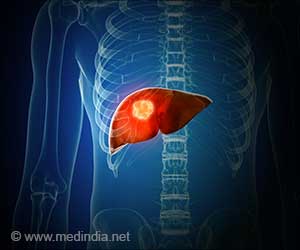Bioinformatics, a tool used to develop human disease research, now proved 95 percent accuracy in detecting the immune responses of extremely complex virus.
Bioinformatics, a tool used to develop human disease research, now proved 95 percent accuracy in detecting the immune responses of extremely complex virus - the vaccinia virus, which is used in making smallpox vaccine by researchers at the La Jolla Institute for Allergy & Immunology (LIAI).
Researchers at the La Jolla Institute for Allergy & Immunology (LIAI), who have used it to successfully predict immune response to one of the most complex viruses known to man – the vaccinia virus, which is used in the smallpox vaccine. Immune responses, which are essentially how the body fights a disease-causing agent, are a crucial element of vaccine development.‘We are excited because this further validates the important role that bioinformatics can play in the development of diagnostic tools and ultimately vaccines,’ said Alessandro Sette, Ph.D., an internationally known vaccine expert and head of LIAI's Emerging Infectious Disease and Biodefense Center. ‘We've shown that it can successfully reveal – with a very high degree of accuracy -- the vast majority of the epitopes (targets) that would trigger an effective immune response against a complex pathogen.’
Bioinformatics holds significant interest in the scientific community because of its potential to move scientific research forward more quickly and at less expense than traditional laboratory testing.
The findings were published this week in a paper, ‘A consensus epitope prediction approach identifies the breadth of murine TCD8+-cell responses to vaccinia virus,’ in the online version of the journal Nature Biotechnology. LIAI scientist Magdalini Moutaftsi was the lead author on the paper.
While bioinformatics – which uses computer databases, algorithms and statistical techniques to analyze biological information -- is already in use as a predictor of immune response, the LIAI research team's findings were significant because they demonstrated an extremely high rate of prediction accuracy (95 percent) in a very complex pathogen – the vaccinia virus. The vaccinia virus is a non-dangerous virus used in the smallpox vaccine because it is related to the variola virus, which is the agent of smallpox. The scientific team was able to prove the accuracy of their computer results through animal testing.
‘Before, we knew that the prediction methods we were using were working, but this study proves that they work very well with a high degree of accuracy,’ Sette said.
Advertisement
The scientists were able to find 95 percent of the MHC binding epitopes through the computer modeling. ‘This is the first time that bioinformatics prediction for epitope MHC binding can account for almost all of the (targeted) epitopes that are existing in very complex pathogens like vaccinia,’ said LIAI researcher Magdalini Moutaftsi. The LIAI scientists theorize that the bioinformatics prediction approach for epitope MHC binding will be applicable to other viruses.
Advertisement
The big advantage of using bioinformatics to predict immune system targets, explained Sette, is that it overcomes the need to manufacture and test large numbers of peptides in the laboratory to find which ones will initiate an immune response. Peptides are amino acid pieces that potentially can be recognized by the immune system. ‘There are literally thousands of peptides,’ explained Sette. ‘You might have to create and test hundreds or even thousands of them to find the right ones,’ he said. ‘With bioinformatics, the computer does the screening based on very complex mathematical algorithms. And it can do it in much less time and at much less expense than doing the testing in the lab.’
The LIAI scientific team verified the accuracy of their computer findings by comparing the results against laboratory testing of the peptides and whole infectious virus in mice. ‘We studied the total response directed against infected cells,’ Sette said. ‘We compared it to the response against the 50 epitopes that had been predicted by the computer. We were pleased to see that our prediction could account for 95% of the total response directed against the virus.’
(Source: Eurekalert)






